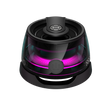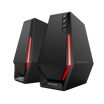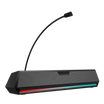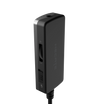Gaming wireless mice have undergone significant evolution since their inception, adapting to the needs of gamers and the rapid advancements in technology. Here's an outline of how gaming wireless mice have transformed over time:
Early Days: The Birth of Wireless
1980s-1990s: The first wireless mice appeared using infrared (IR) technology.
Challenges: Limited precision, short battery life, and frequent interference issues.
2000s: Radio Frequency (RF) and the Gaming Push
Introduction of RF: Switched from infrared to RF, which improved range and response time.
First Gaming Models: Companies like Logitech and Razer launched their first wireless gaming mice, though they still struggled with lag and battery issues.
Receptiveness to Wireless: Gamers preferred wired mice due to their reliability.
Mid-2000s to Early 2010s: Advancements in Sensors and Connectivity
Sensor Improvements: Optical and laser sensors became more accurate.
Proprietary Wireless Tech: Manufacturers started developing custom wireless protocols (e.g., Logitech’s Lightspeed), reducing latency to the level of wired models.
Battery Innovations: Rechargeable batteries became standard, extending battery life significantly.
Late 2010s: Towards Competitive Gaming
Lag-Free Performance: Manufacturers achieved ultra-low latency and high polling rates.
Lightweight Designs: A shift toward lightweight designs made wireless gaming mice easier to handle.
RGB Customization: RGB lighting became a standard feature for personalization.
2020s and Beyond: The Future of Wireless Gaming Mice
AI-Driven Features: Smart sensors and AI-based software are now providing precision adjustments based on playing style.
Integrated Ecosystems: Gaming mice now integrate with complete gaming ecosystems, providing seamless connectivity with keyboards, headsets, and more.
New Technologies: Innovations like adaptive frequency hopping (AFH), fast charging, and swappable batteries continue to emerge.






















































